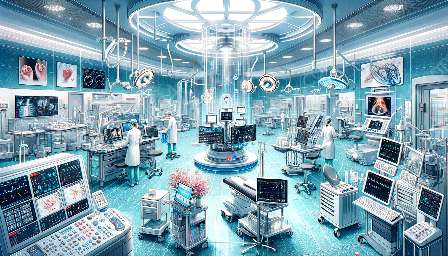Medical devices play a critical role in the diagnosis, monitoring, and treatment of various health conditions. As technology continues to advance, bioengineering has emerged as a key factor in improving the design and functionality of diagnostic medical devices. This topic cluster explores the potential of bioengineering in revolutionizing the field of medical devices, particularly in the context of diagnostic tools and equipment.
The Role of Bioengineering in Medical Device Design
Biomedical engineering, commonly known as bioengineering, involves the application of engineering principles and techniques to the field of biology and healthcare. In the context of medical devices, bioengineering plays a pivotal role in enhancing the performance, accuracy, and user-friendliness of diagnostic tools. By leveraging the principles of bioengineering, medical device manufacturers can develop innovative solutions that address the evolving needs of healthcare professionals and patients.
Improving Accuracy and Sensitivity
Bioengineering can significantly improve the accuracy and sensitivity of diagnostic medical devices. Through advanced sensor technologies, signal processing algorithms, and data analysis techniques, bioengineers can enhance the precision of medical diagnostic equipment. This can lead to more reliable test results and earlier detection of health conditions, ultimately improving patient outcomes.
Optimizing User Experience
Another key aspect of bioengineering in medical device design is the focus on optimizing the user experience. User-centered design principles, ergonomic considerations, and intuitive interfaces are integral to creating medical devices that are easy to operate and provide a seamless experience for healthcare professionals and patients. By applying bioengineering principles, designers can create diagnostic devices that are not only effective but also user-friendly and accessible.
Integration of Advanced Imaging Technologies
Advanced imaging technologies, such as MRI, CT scans, and ultrasound, have revolutionized medical diagnostics. Bioengineering plays a crucial role in the integration and enhancement of these imaging modalities within diagnostic medical devices. By incorporating cutting-edge imaging technologies into portable and cost-effective devices, bioengineers can expand access to advanced diagnostic capabilities, particularly in resource-constrained or remote healthcare settings.
Enhancing Connectivity and Data Management
Bioengineering also contributes to the connectivity and data management aspects of diagnostic medical devices. With the increasing emphasis on digital health and remote monitoring, bioengineers are developing solutions that enable seamless data transfer, interoperability with healthcare IT systems, and secure storage of patient information. These advancements not only improve the efficiency of diagnostic processes but also support more comprehensive and informed decision-making by healthcare providers.
Future Trends and Innovations
The future of bioengineering in medical device design holds tremendous potential for further innovation and advancement. Emerging technologies, such as biosensors, nanotechnology, and wearable diagnostic devices, are reshaping the landscape of medical diagnostics. Bioengineering expertise will continue to drive the development of next-generation diagnostic tools that are more accurate, portable, and adaptable to diverse healthcare environments.
Conclusion
As the intersection of engineering and healthcare, bioengineering offers multifaceted opportunities to enhance the design of diagnostic medical devices. By leveraging bioengineering principles, medical device manufacturers can create innovative solutions that improve accuracy, user experience, connectivity, and overall diagnostic capabilities. The ongoing collaboration between bioengineers, healthcare professionals, and technology experts is essential in realizing the full potential of bioengineering in shaping the future of medical diagnostics.


